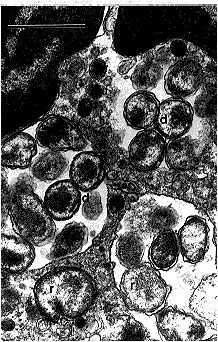Volume 2, Number 1—January 1996
Synopsis
Emergence of the Ehrlichioses as Human Health Problems
Figure 1

Figure 1. Dendrogram representing the phylogenic relationships of ehrlichiae and other Protobacteria as determined by 16S rDNA sequence similarity. The three clusters of bacteria enclosed in rectangles include organisms designated as Ehrlichia, although they differ substantially.
Page created: December 20, 2010
Page updated: December 20, 2010
Page reviewed: December 20, 2010
The conclusions, findings, and opinions expressed by authors contributing to this journal do not necessarily reflect the official position of the U.S. Department of Health and Human Services, the Public Health Service, the Centers for Disease Control and Prevention, or the authors' affiliated institutions. Use of trade names is for identification only and does not imply endorsement by any of the groups named above.